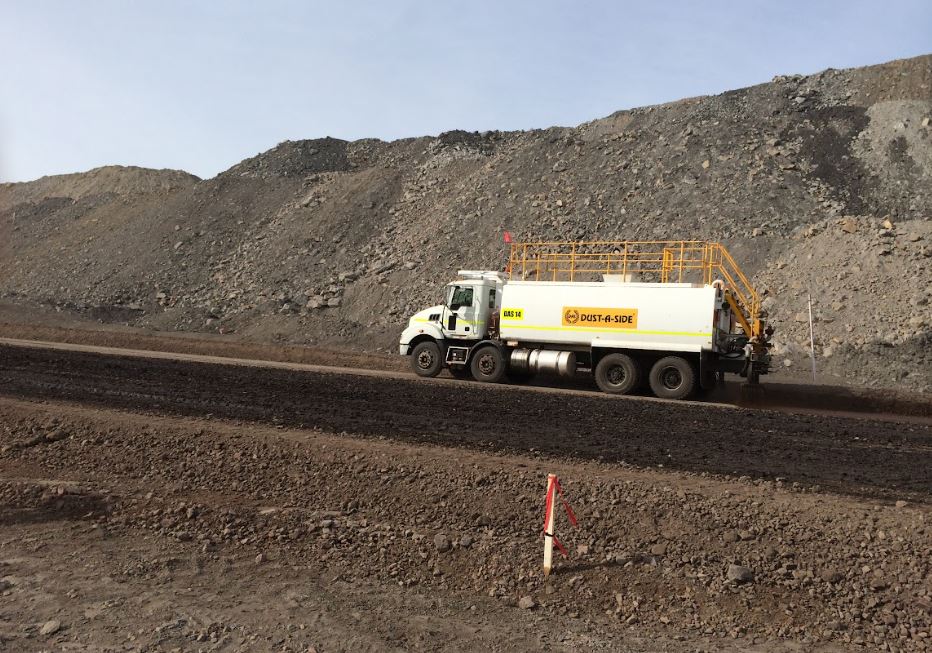Why using water for dust control isn’t ‘free’

One of the greatest contributors to the consumption of water on mine sites is its use for dust control purposes.
Many mines will spray high volumes of untreated water via water carts onto road surfaces and raw materials in order to prevent dust from becoming airborne. As a general example, a five kilometre stretch of haul road that has a width of 25 metres could use in excess of 500,000 L of water every single day just to keep the dust under control.
This is often done with the mindset that the water being used is ‘free’ because it's being pulled from underground water tables available within the mine lease, or the mine has excess water onsite from rainfall which can't be discharged due to EPA restrictions so it needs to be used anyway.
While the physical water itself may be free, it’s the costs associated with relying on plain water for dust control that start to add up very quickly.
For example, truck tyres are extremely susceptible to cuts from jagged stones on wet road surfaces as wet rubber is up to 10 times easier to cut than dry rubber. Around 80% of earthmover tyres fail before they wear out, with cuts accounting for 45% of these failures. The cost of replacing damaged tyres is a significant operating expense for any mine.
Furthermore, constantly spraying down haul roads causes damage to the running surface as valuable binding materials are washed away. This ultimately leads to the formation of potholes which will need to be repaired, driving up overall road maintenance costs. Repairs also mean downtime which impacts production levels and this is of course costly in the long run.
Additionally, untreated water is ineffective at suppressing dust in high temperatures as it evaporates so quickly. Mines located in hot climates ultimately spend large amounts of money in labour and fuel during the warmest months just to prevent roads and materials from drying out as watering carts need to run almost around the clock to keep up.
The whole approach leads to a cycle of overspending on what is incorrectly treated as a ‘free’ resource.
This is definitely not to say that water has no place in dust control measures. By adding binder products to water carts, water reserves can instead be utilised much more sustainably and cost-effectively.
With the right dust control strategy, mines can actually even achieve value creation. Water cart fleets can be off-hired so that staff are instead operating equipment which actually contributes to production such as dump trucks.
But how can this actually be achieved?
Case study - reducing water cart expenses and creating millions in annual value
As we explore in this detailed case study, Dust-A-Side Australia helped a mining client achieve millions of dollars in added value with a managed dust control service.
Due to dryer than usual weather conditions, the mine was looking for ways to reduce the amount of water being used for dust suppression purposes on its haul roads. Dust-A-Side Australia partnered with the client to implement a managed dust control strategy incorporating the use of HydroTac.
Hydrotac is a biodegradable, lignosulphonate based road binder. When added to water carts, it helps bind surface road and dust particles together. Water evaporates from the lignosulphonate as it dries and the dust particles are trapped by the high-viscosity, naturally sticky material. Once applied, the need for reapplication is minimal. By using HydroTac instead of just untreated water, cart hours can actually be reduced by up to 80% as roads remain dust free for much longer.
The managed service provided by Dust-A-Side Australia to this client resulted in an incredible annual value creation of $9.31 million compared to a base case of using untreated water for haul road dust control.
This figure was calculated by:
- Combining the annual savings of the off-hire of 6 x water carts ($6.25 million)
- Adding the annual water usage savings achieved by using HydroTac ($2.92 million)
- Adding the annual savings on haul truck maintenance achieved by using HydroTac ($4.80 million)
- Offsetting these savings against the initial outlay for the purchases of the HydroTac formulation ($4.66 million)
In total, the mine achieved a 60% total savings in water used on haul roads, from 10ML per day to 4ML per day. To see the full case study data, click the link below.
Use water more cost-effectively at your site with Dust-A-Side Australia
Even if your project has access to a water table, it still pays to investigate strategies to achieve more efficient dust control outcomes, both in terms of sustainability and operational expenditure.
Dust-A-Side Australia helps clients all across the country achieve safer and more productive work environments. To learn more, request either a no obligation sales call or a technical consultation.



